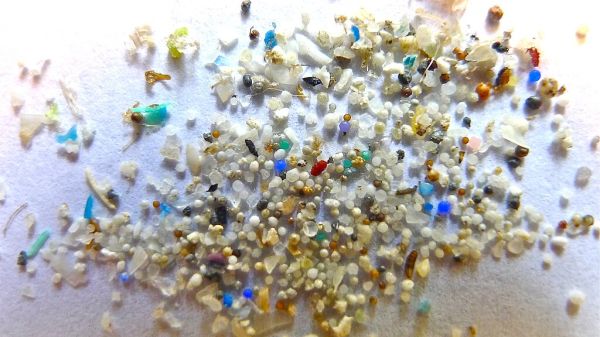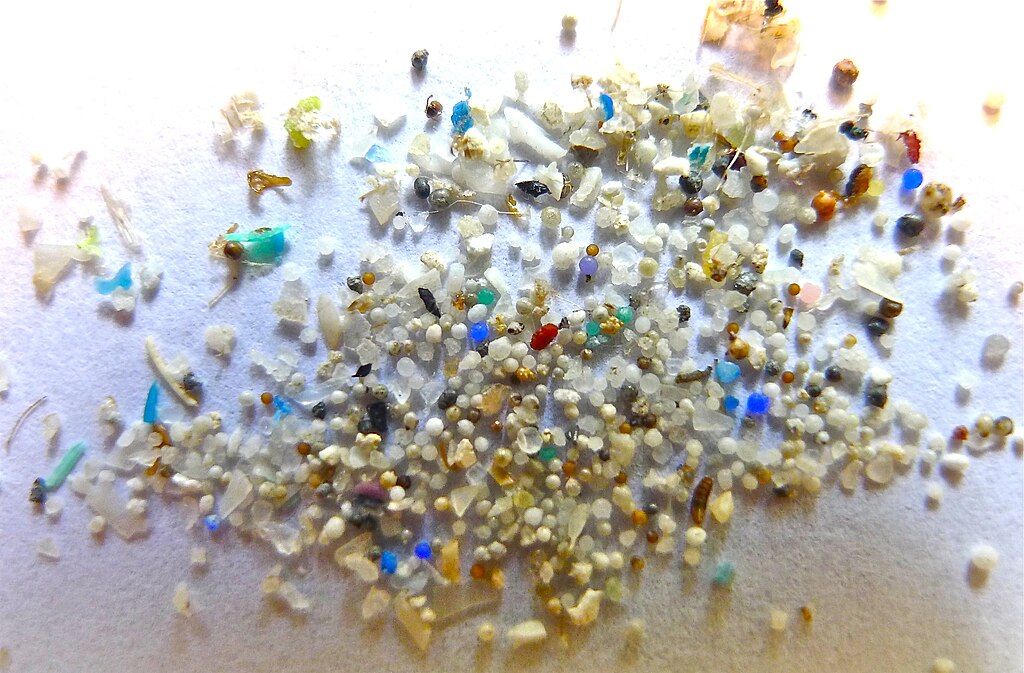E-STEM Applied: Teenagers Design Ultrasound Device for Microplastic Filtration

The Story
Microplastics have become a significant global environmental issue, posing threats to wildlife and human health. Current methods for removing microplastics are often costly or involve hazardous chemicals, highlighting the need for a safer, more efficient solution.
That's where Texas teens Victoria Ou and Justin Huang come in. Their innovative device, which could eliminate 84–96% of some microplastics from water, earned them the $50,000 Gordon E. Moore Award at the Regeneron International Science and Engineering Fair this year.

Microplastics are tiny plastic particles, often less than 5 millimeters in size, that pollute our environment and pose serious risks to wildlife and human health. Source: Oregon State University, CC BY-SA 2.0 via Wikimedia Commons

Justin Huang (center) and Victoria Ou (right) receive the 2024 Gordon E. Moore Award at the Regneron International Science and Engineering Fair. The high schoolers designed a ultrasound filtration device that can capture microplastics in water. Source: Society for Science
The pair was inspired to develop their device after a visit to a water treatment plant where they learned about the challenges treatment plants have in removing microplastics, which have become more prevalent in drinking water sources all over the world. Their project included a new ultrasound filtration system design using piezoelectric transducers and steel tubes, and successfully filtered microplastics from laundry water and handled large volumes.
Despite current limitations in microplastic removal technologies, their device shows promise as a more affordable and efficient solution, with potential applications in both industrial plants and home settings. Ou and Huang hope to refine and scale up their technology to address the global microplastics crisis.
Learn More
Review Ou and Huang's abstract and other details about their project, and those of past recipients, on the Society for Science Gordon E. Moore Awards page.
Your Thoughts
We'd love to hear from you! Share your thoughts, ideas, or experiences in the comments below. Whether it's a project idea, a classroom activity, or how you plan to inspire your students, your input can spark a conversation and inspire others.
- How can you encourage your students to turn a visit to a local facility, like a water treatment plant, into a learning experience that sparks innovative thinking?
- What steps can you take to incorporate environmental problem-solving into your classroom or community activities?
About the Writer
Allison Martin is a dedicated professional whose journey in environmental interpretation began in 2008. With a passion for education, she transitioned to becoming a water and waste education program manager and curriculum specialist. In November 2021, she founded Blueblossom Consulting. Through her venture, Allison is committed to strengtheninging organizations, municipalities, and school districts to enhance their environmental education programs and services. She is also a co-moderator for the E-STEM Education eePRO Group.


